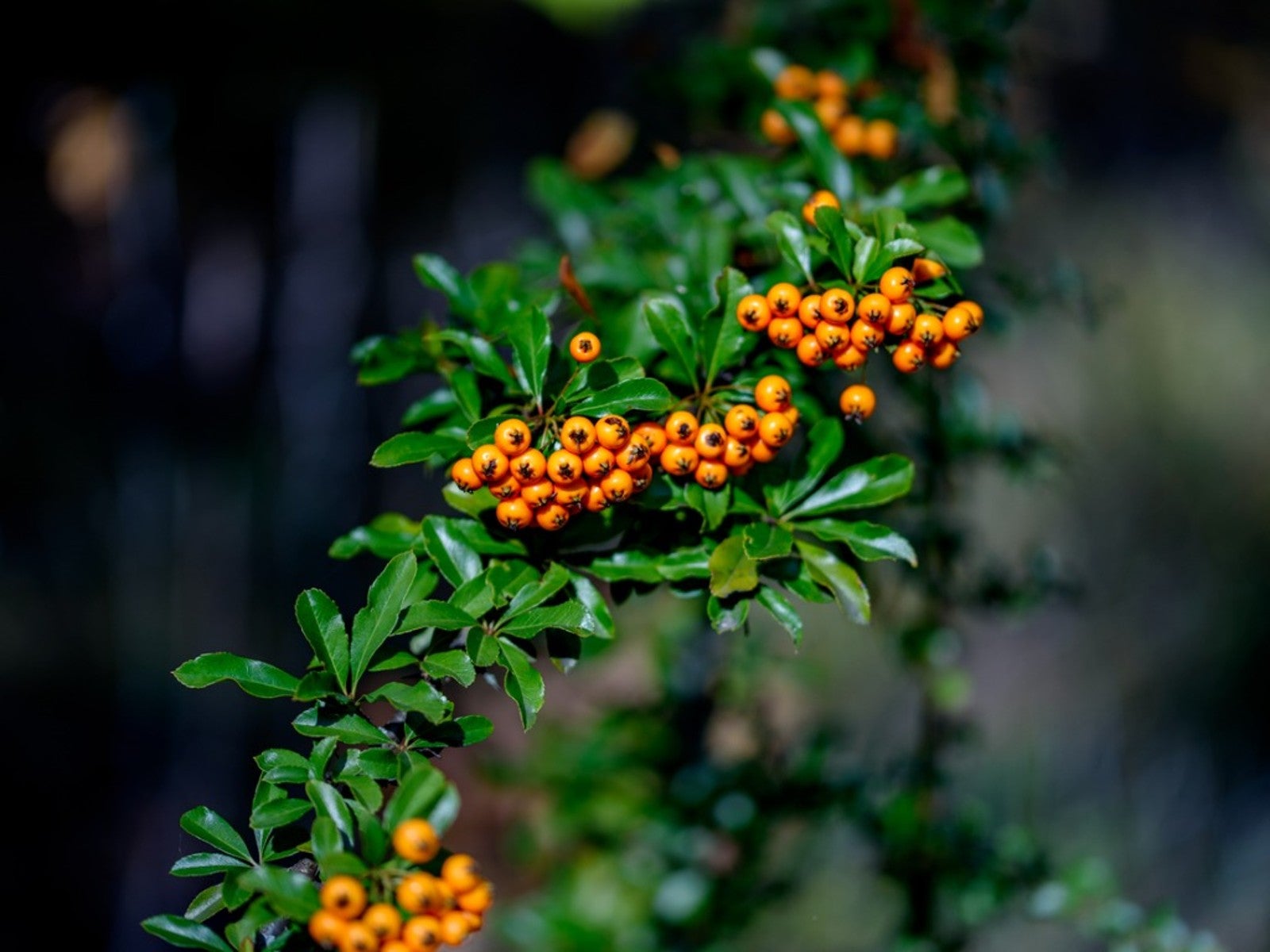Planting Firethorn: Growing Tips And Care Of Firethorn Bush


Pyracantha is the scientific name for firethorn plants, which are hardy from USDA plant hardiness zones 6 to 9. Firethorn is an evergreen plant that is easy to grow and provides seasonal interest and berries. Even the most novice gardener can handle the simple care of the firethorn bush.
About Firethorn Plants
Firethorn is a tall shrub or small tree at 6 to 16 feet (2 to 5 m.) tall and almost as wide. There is a variety of conditions suitable for planting firethorn. This versatile and colorful shrub may be used as an espaliered specimen, in containers, as a hedge, or just as a bright season-long addition to a border or bed.
Enjoy the shiny leaves year around with small, white flowers appearing in early summer. These develop into red or orange berries that persist well into winter.
Growing Firethorn Shrubs
Pick either a sunny, shady, or a partially sunny location for growing firethorn shrubs. They also thrive in either dry or moist soils, although damper areas produce bigger plants. Therefore, you may want to choose a fertile, moist location when planting firethorn.
Consider the location of your shrub carefully. The plant's spectacular looks are paired with prickly leaves that snag and scrape. Plant the shrub away from doorways, gates, and entryways.
Dig the hole twice as large as the root ball when planting firethorn and provide consistent water while establishing. Install firethorn in fall for the healthiest plant and best results.
Firethorn Care
Care of firethorn bushes is low-maintenance and they are prone to few pests and disease problems. Firethorn can even tolerate short periods of freezing and drought conditions once established with mulch around the root zone.
Gardening tips, videos, info and more delivered right to your inbox!
Sign up for the Gardening Know How newsletter today and receive a free copy of our e-book "How to Grow Delicious Tomatoes".
The plant may get fire blight disease if it sits in an overly moist area. Plants that get too much nitrogen and grow excess leafy tips will not form dense clusters of fruits. You can choose a number of varieties of the plant resistant to disease and problems. Check to see which ones are most suited for your zone when growing firethorn shrubs.
Firethorn care is almost foolproof as long as you follow a few important tips. Firethorn plants grow quickly and benefit from occasional pruning. You can trim them at any time of the year as long as you take no more than one-third of the growth. To ensure fruits, prune in early spring before the flowers form.
Varieties of Firethorn
A low, spreading variety perfect for borders is 'Lowboy'. One of the fastest and tallest cultivars is 'Mohave', with 'Teton' a close second. Both 'Apache' and 'Fiery Cascade' are resistant to many different diseases.
One primary concern when choosing a firethorn plant is berry color. 'Teton' gets bright vibrant golden berries. Red forms include 'Tiny Tim' and 'Apache'. The rich, sunny, red-gold berries of 'Mohave' cannot compete with the startling, orange fruits on 'Gnome', 'Lowboy', and 'Fiery Cascade'.
Whichever variety you choose, be assured that the birds will flock to your garden. The clusters are also excellent in wreaths and as part of everlasting bouquets. This easy to care for plant is a gem for the landscape and will reward you with a variety of uses.

Bonnie Grant is a professional landscaper with a Certification in Urban Gardening. She has been gardening and writing for 15 years. A former professional chef, she has a passion for edible landscaping.
-
 8 Noteworthy Native Azaleas Every Gardener Should Know – And Grow!
8 Noteworthy Native Azaleas Every Gardener Should Know – And Grow!Native azaleas offer brilliant blooms in a range of colors and sizes. Here are a few favorites to get inspired and start working on a native shade garden!
-
 Growing Climbing Roses: How To Create Elegant Displays With Maximum Blooms
Growing Climbing Roses: How To Create Elegant Displays With Maximum BloomsMaster the art of growing stunning climbing roses with this essential guide to creating vibrant, fragrant walls and structures all summer long.